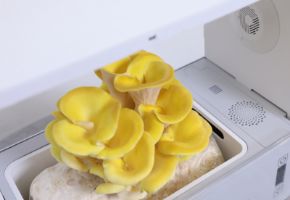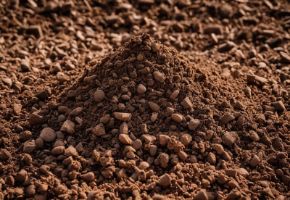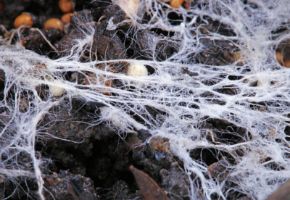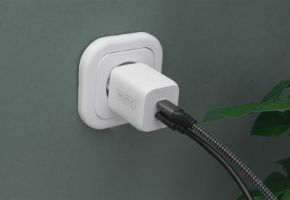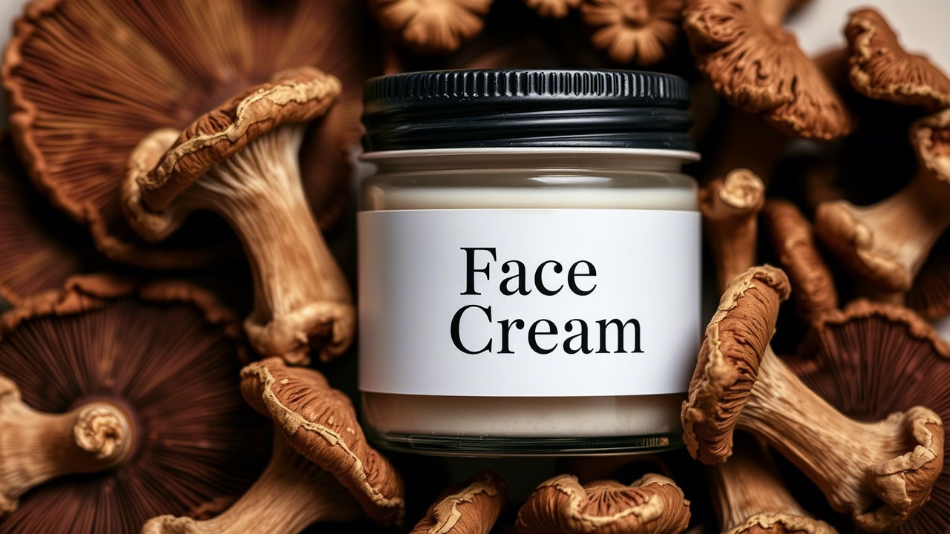In recent years, the world of natural cosmetics has discovered the extraordinary potential of mushrooms. Rich in antioxidants, beta-glucans, and regenerative compounds, mushrooms like Reishi, Chaga, Cordyceps, Maitake, and Shiitake are revolutionizing the concept of organic skincare. In this article, we will explore how to transform these forest treasures into effective DIY cosmetics, following a safe and environmentally friendly harvesting guide.
Each fungal species offers unique properties: while Reishi is renowned for its anti-aging virtues, Maitake excels at rebalancing the skin microbiome.
Why use mushrooms in cosmetics? Science and tradition meet
Before diving into recipes, it’s essential to understand why mushrooms are such precious cosmetic ingredients. Mycotherapy (the therapeutic use of mushrooms) boasts a millennia-old history in traditional Chinese and Siberian medicine, but only recently has Western science validated their mechanisms of action at the skin level. Comparative studies show that medicinal mushrooms contain antioxidant concentrations up to 50 times higher than traditional medicinal plants.
The bioactive compounds that make mushroom cosmetics unique
A study published in the National Center for Biotechnology Information identified over 150 dermatologically active molecules in medicinal mushrooms:
- Beta-glucans (1,3/1,6): stimulate collagen production (+28% according to in vitro studies) and improve the hydrolipidic barrier, reducing TEWL (transepidermal water loss)
- Triterpenes (found in Reishi): anti-inflammatory action comparable to 1% hydrocortisone but without side effects, plus skin-brightening properties for dark spots
- Fungal melanin (in Chaga): natural protection equivalent to SPF 5-7, ideal for daily sun defense
- Ellagic acid: neutralizes free radicals with an ORAC value of 25,000 μmol TE/100g, surpassing berries
- Erinacines (in Lion's Mane): stimulate nerve growth factor (NGF), useful for reducing expression lines
Harvesting guide: how to select mushrooms for cosmetics
Creating safe cosmetics starts with responsible harvesting. Not all mushrooms are suitable for topical use, and some require special precautions. Here’s how to navigate the forest with awareness.
The 7 most effective species for DIY cosmetics
According to the applied mycology manual by the USDA Agricultural Research Service, these varieties offer the best safety/efficacy ratio:
- Ganoderma lucidum (Reishi): contains ganoderic acid, which inhibits hyaluronidase, preserving skin hyaluronic acid
- Inonotus obliquus (Chaga): rich in superoxide dismutase (SOD), an anti-aging enzyme that decreases by 40% after age 30
- Trametes versicolor (Turkey Tail): PSK (polysaccharide K) helps reduce imperfections thanks to its prebiotic action
- Auricularia auricula-judae (Jelly Ear): retains water up to 500 times its weight, outperforming hyaluronic acid
- Hericium erinaceus (Lion's Mane): stimulates natural moisturizing factor (NMF) synthesis, increasing PCA levels by 27%
- Grifola frondosa (Maitake): rich in D-fraction, which improves microcapillary skin circulation
- Lentinula edodes (Shiitake): contains lentinan, which accelerates cell turnover without causing irritation
Essential harvesting precautions
The Italian Mycological Society recommends:
- Harvest at least 50 meters from busy roads—mushrooms bioaccumulate heavy metals up to 200 times more than plants
- Identify every specimen with absolute certainty—use at least two independent recognition sources
- For beginners: start with non-toxic species even if ingested, like Trametes versicolor
- Dry immediately at max 40°C to preserve heat-sensitive compounds
From harvest to formulation: preparing fungal extracts
Transforming fresh mushrooms into cosmetic ingredients requires specific techniques. Here are the most effective methods for extracting active compounds.
Dual extraction: the complete method for lipophilic and hydrophilic Ccmpounds
As explained in the Journal of Ethnopharmacology, many beneficial mushroom compounds require both water and alcohol for complete extraction:
- Hydroalcoholic phase: macerate 100g of dried mushrooms in 500ml of 40° alcohol for 4 weeks, shaking daily
- Aqueous phase: filter and simmer the residue in 1L of water for 2 hours at 85°C (do not boil to avoid denaturing beta-glucans)
- Combination: combine the two extracts and evaporate at 60°C until reduced by 50%
- Preservation: add 5% vegetable glycerin as a natural stabilizer
Alternative method for oil-based extracts
For lipophilic compounds like triterpenes:
- Infuse 50g of dried mushrooms in 200ml of jojoba oil at 50°C for 8 hours
- Filter with fine mesh cloth and add 10% grapefruit seed oil as a natural preservative
DIY mushroom cosmetic recipes
Let’s move to practice with tested formulations, where each ingredient synergizes with fungal actives.
Reishi face cream for mature skin
Ingredients for 50ml:
- 15ml rosehip oil (regenerates collagen thanks to natural trans-retinoic acid)
- 10ml unrefined shea butter (source of vitamins A, E, and F)
- 20ml rose damascena hydrosol (pH 5.5, perfect for the acid mantle)
- 5ml Reishi dual extract
- 1g white beeswax (emollient and film-forming)
- 5 drops of tocopherol (100% natural vitamin E)
- 2 drops of frankincense essential oil (Boswellia serrata, synergizes with Reishi’s triterpenes)
Detailed procedure:
- Sanitize all tools with 70° alcohol
- Melt the oil phase (oils, butter, wax) in a double boiler at 65°C
- Warm the water phase (hydrosol + extract) separately at 40°C
- Combine the two phases drop by drop while emulsifying with an immersion blender
- Mix until completely cooled to avoid separation
- Add heat-sensitive actives (vitamin E, essential oils) below 30°C
Chaga and red clay purifying mask
Ingredients for one application:
- 2 tbsp Moroccan red clay (rich in copper and iron, gentler than green clay)
- 1 tsp wild Siberian Chaga powder (ORAC 146,700)
- 1 tsp Manuka honey MGO 400+ (certified antibacterial activity)
- 3 tbsp steam-distilled witch hazel hydrosol
- 5 drops of tea tree essential oil (Melaleuca alternifolia, antimicrobial)
Advanced procedure:
- Mix dry powders first to ensure even distribution
- Add hydrosol gradually until achieving a Greek yogurt consistency
- Incorporate honey, pre-warmed in a double boiler to thin it
- Apply with a mask brush in a thick layer on damp skin
- Leave on for 10 minutes (no longer to avoid skin stress)
Cordyceps and hyaluronic acid regenerating serum
Ingredients for 30ml:
- 15ml birch water (rich in draining saponins)
- 5ml Cordyceps militaris aqueous extract (source of cordycepin)
- 1g low-molecular-weight hyaluronic acid (penetrates to the dermis)
- 5ml USP-grade vegetable glycerin (osmotic humectant)
- 3 drops of grapefruit seed extract (natural preservative)
Maitake and cocoa lip balm
Ingredients for 15ml:
- 8ml fractionated coconut oil (doesn’t solidify below 25°C)
- 4ml raw cocoa butter (protects against oxidation)
- 2ml Maitake oil extract
- 1g candelilla wax (vegan alternative to beeswax)
- 1 tsp raw cocoa powder (antioxidant and natural pigment)
Preservation and safety of mushroom cosmetics
Fresh products require special care to maintain stability and efficacy over time.
Shelf life and signs of degradation
- Emulsified creams: 3 weeks refrigerated—check for phase separation
- Hydroalcoholic extracts: 6 months at room temperature in dark glass—alcohol evaporation reduces efficacy
- Powder masks: 1 year in airtight containers with silica gel—moisture renders them ineffective
- Active serums: 2 weeks refrigerated—prefer anhydrous formulations for greater stability
Essential preliminary tests
Before full use:
- Patch test on the forearm for 48 hours
- Check pH with litmus paper (ideal 4.5–5.5)
- Observe for precipitation or odor changes
Interactions to avoid
Some fungal actives may:
- Excessively potentiate retinoids (risk of irritation)
- Bind to minerals in clays (reducing efficacy)
- Be inactivated by aggressive preservatives like parabens
With these few simple steps, you too can now try your hand at making your own mushroom cosmetics!
The fungal kingdom is a universe in continuous evolution, with new scientific discoveries emerging every year about their extraordinary benefits for gut health and overall well-being. From now on, when you see a mushroom, you will no longer think only of its taste or appearance, but of all the therapeutic potential it holds in its fibers and bioactive compounds. ✉️ Stay connected - Subscribe to our newsletter to receive the latest studies on: Nature offers us extraordinary tools to take care of our health. Fungi, with their unique balance between nutrition and medicine, represent a fascinating frontier we are only beginning to explore. Continue to follow us to discover how these extraordinary organisms can transform your approach to well-being.Continue your journey into the world of fungi






